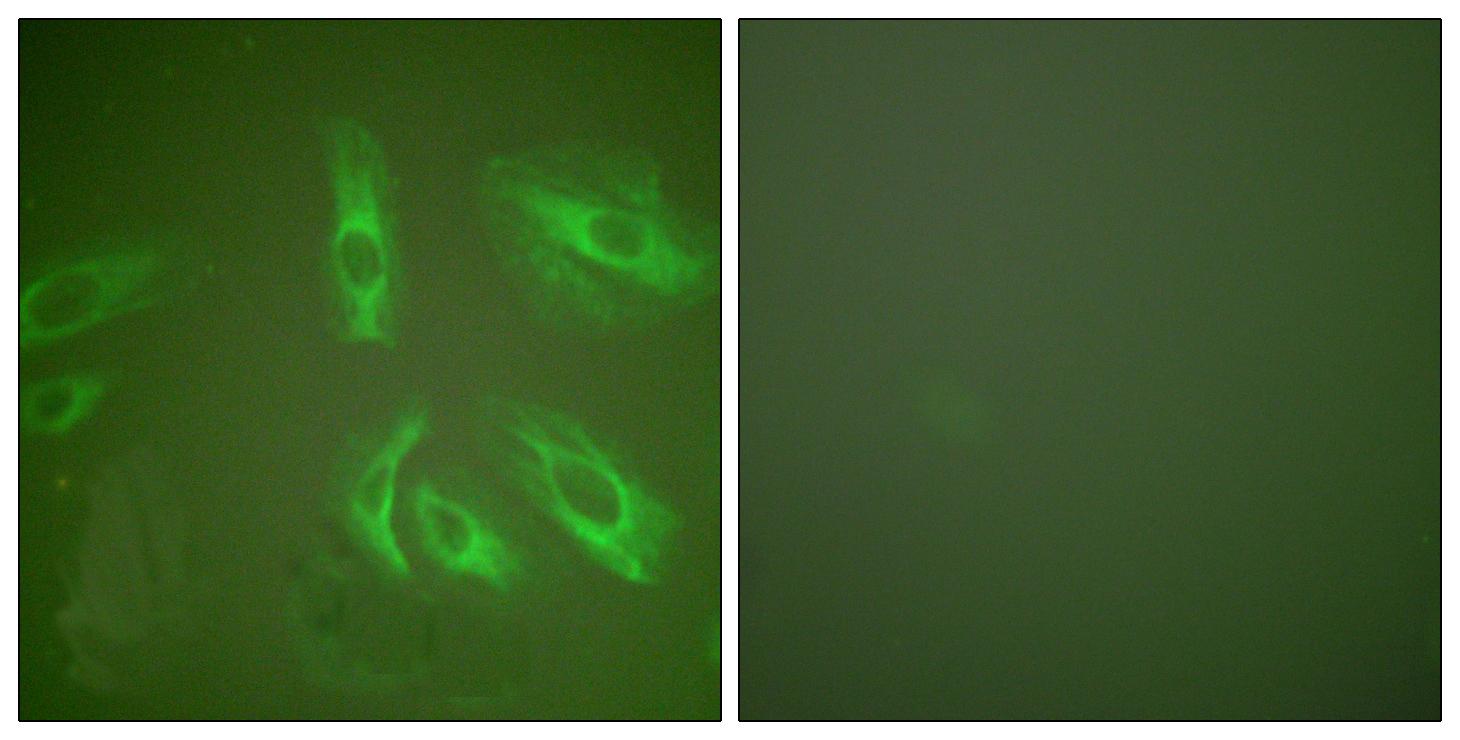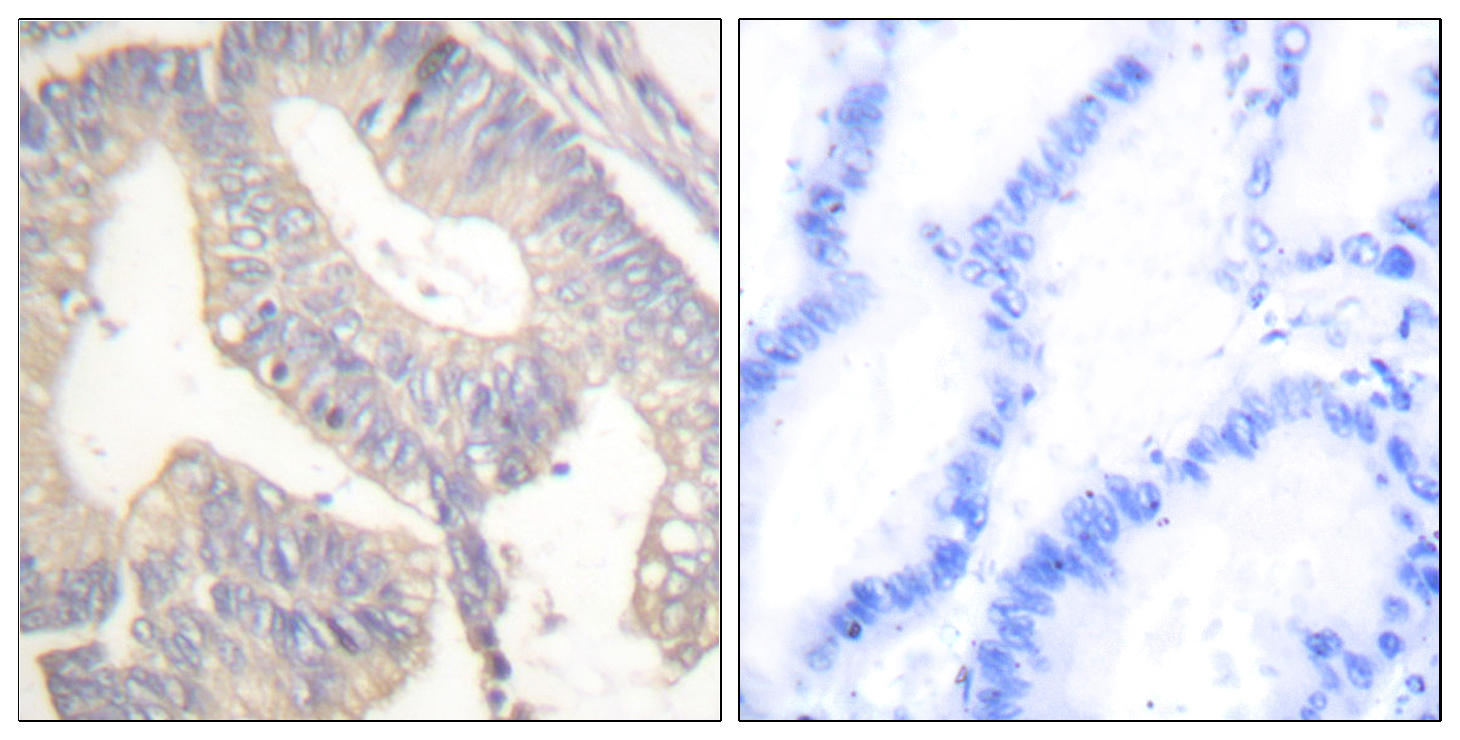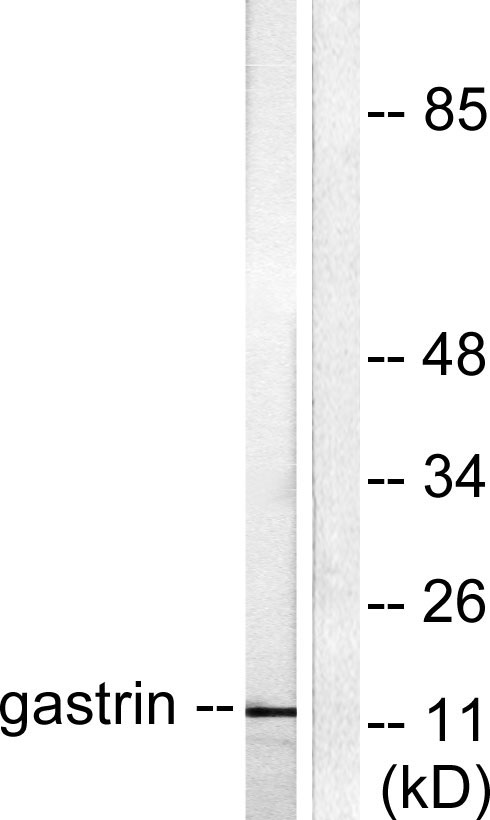Gastrin Polyclonal Antibody
- Catalog No.:YT1857
- Applications:WB;IHC;IF;ELISA
- Reactivity:Human;Mouse;Rat
- Target:
- Gastrin
- Fields:
- >>Gastric acid secretion
- Gene Name:
- GAST
- Protein Name:
- Gastrin
- Human Gene Id:
- 2520
- Human Swiss Prot No:
- P01350
- Mouse Gene Id:
- 14459
- Mouse Swiss Prot No:
- P48757
- Rat Gene Id:
- 25320
- Rat Swiss Prot No:
- P04563
- Immunogen:
- The antiserum was produced against synthesized peptide derived from human Gastrin. AA range:52-101
- Specificity:
- Gastrin Polyclonal Antibody detects endogenous levels of Gastrin protein.
- Formulation:
- Liquid in PBS containing 50% glycerol, 0.5% BSA and 0.02% sodium azide.
- Source:
- Polyclonal, Rabbit,IgG
- Dilution:
- WB 1:500 - 1:2000. IHC 1:100 - 1:300. IF 1:200 - 1:1000. ELISA: 1:10000. Not yet tested in other applications.
- Purification:
- The antibody was affinity-purified from rabbit antiserum by affinity-chromatography using epitope-specific immunogen.
- Concentration:
- 1 mg/ml
- Storage Stability:
- -15°C to -25°C/1 year(Do not lower than -25°C)
- Other Name:
- GAST;GAS;Gastrin
- Observed Band(KD):
- 12kD
- Background:
- Gastrin is a hormone whose main function is to stimulate secretion of hydrochloric acid by the gastric mucosa, which results in gastrin formation inhibition. This hormone also acts as a mitogenic factor for gastrointestinal epithelial cells. Gastrin has two biologically active peptide forms, G34 and G17. [provided by RefSeq, Jul 2008],
- Function:
- function:Gastrin stimulates the stomach mucosa to produce and secrete hydrochloric acid and the pancreas to secrete its digestive enzymes. It also stimulates smooth muscle contraction and increases blood circulation and water secretion in the stomach and intestine.,online information:Gastrin entry,PTM:Sulfation enhances proteolytic processing, and blocks peptide degradation. Levels of sulfation differ between proteolytically-cleaved gastrins. Thus, gastrin-6 is almost 73% sulfated, whereas the larger gastrins are less than 50% sulfated. Sulfation levels are also tissue-specific.,PTM:Two different processing pathways probably exist in antral G-cells. In the dominant pathway progastrin is cleaved at three sites resulting in two major bioactive gastrins, gastrin-34 and gastrin-17. In the putative alternative pathway, progastrin may be processed only at the most C-terminal dibasic site resul
- Subcellular Location:
- Secreted.
- Expression:
- Gastric mucosa,
- June 19-2018
- WESTERN IMMUNOBLOTTING PROTOCOL
- June 19-2018
- IMMUNOHISTOCHEMISTRY-PARAFFIN PROTOCOL
- June 19-2018
- IMMUNOFLUORESCENCE PROTOCOL
- September 08-2020
- FLOW-CYTOMEYRT-PROTOCOL
- May 20-2022
- Cell-Based ELISA│解您多样本WB检测之困扰
- July 13-2018
- CELL-BASED-ELISA-PROTOCOL-FOR-ACETYL-PROTEIN
- July 13-2018
- CELL-BASED-ELISA-PROTOCOL-FOR-PHOSPHO-PROTEIN
- July 13-2018
- Antibody-FAQs
- Products Images

- Immunofluorescence analysis of HeLa cells, using Gastrin Antibody. The picture on the right is blocked with the synthesized peptide.

- Immunohistochemistry analysis of paraffin-embedded human colon carcinoma tissue, using Gastrin Antibody. The picture on the right is blocked with the synthesized peptide.

- Western blot analysis of lysates from NIH/3T3 cells, using Gastrin Antibody. The lane on the right is blocked with the synthesized peptide.



